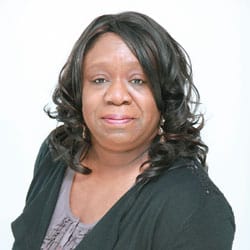 The need for authenticity across all industries today is undeniable. To succeed in a world where organisations and management are under increasing scrutiny, companies must align what they say and how they behave (the brand) with the shared perceptions of others (the reputation). Understanding consumers’ expectations is fundamental.
The need for authenticity across all industries today is undeniable. To succeed in a world where organisations and management are under increasing scrutiny, companies must align what they say and how they behave (the brand) with the shared perceptions of others (the reputation). Understanding consumers’ expectations is fundamental.
FleishmanHillard’s Authenticity Gap methodology helps companies understand and proactively manage the gap between audiences’ expectations and actual experiences with a company or brand. The insights allow organisations to create true relationships with their audiences – authentic engagement that drives progress and opportunity.
The Authenticity Gap research is conducted annually among more than 570 companies and brands in more than 60 categories – including pharmaceuticals – in US, Canada, UK, Germany and Japan. It measures the gap using a framework of nine drivers that shape perceptions and beliefs about an organisation. The nine drivers fall into three interconnected groups: management behaviours, customer benefits and society outcomes, with each group made up of three individual drivers.
Shifting expectations and experiences
Topline results from the latest Authenticity Gap studies highlighted some interesting shifts compared to the previous study that can help to shape our communication and marketing strategies in 2016.
Expectations of management to behave ethically and communicate transparently are on the rise (up to 27% in 2015 compared with 25% in 2014), but consumers say their experience with such is less and less. This is the only driver where the gap is widening with upward movement on expectations and downward on experience.
When it comes to customer benefits, expectations for innovation in the previous study were off the charts, quite literally in some countries. But those expectations dropped in 2015 (55% versus 61% in 2014) and are being replaced with new expectations around value. But value isn’t just about cost – how transparent a company is in its pricing is even more important than being cheaper than competitors.
People increasingly look beyond governments to companies and organisations to help solve the world’s problems. Expectations for treatment of employees, community impact and care of the environment – the society outcomes drivers – are going up versus 2014 (up 18% from 16%). In fact, there are strong correlations between local advocacy and care of the environment for more companies than for any other driver.
Valued information sources
The research also provides some interesting insights about the sources of information consumers most value. Knowing who to listen to and who to trust is increasingly difficult. Given the onslaught of information we are all exposed to hourly, understanding which sources of information people most value can help with identifying the right channels to most effectively convey brand and corporate messages.
Consumers were asked for their views on the sources of information people listen to and most value when making decisions about specific brands. Topping the list is ‘knowledgeable friends, family and colleagues’ at 36% in all countries except Japan, where ‘companies and organisations’ is number one. One of the most surprising findings from the research is that today’s consumers find information directly from companies as valuable as information from mainstream media (both 30%). Only 20% said ‘people who work in the industry’, including employees, are a valuable source of information, with ‘blogs, forums and online communities’ scoring 19% and ‘personalities and celebrities’ trailing in at 9%.
The implications of these findings are interesting. Firstly, with many companies working hard to be part of the online conversation, executives would do well to also pay as much attention to the offline, face-to-face conversations going on about their companies. Secondly, many companies need to keep working on becoming better storytellers and using their ‘owned’ channels in ways that have a more authentic connection with their audiences. Thirdly, many managers forget employees as important stakeholders in telling their organisation’s story. Not communicating with this audience is a missed opportunity.
Credible communications
The Authenticity Gap research also shows that overall, expectations of credible and frequent communications are low but they are growing. These low expectations may be driven by the fact that consumers aren’t hearing enough communication on the issues they care about. The previous study showed that in almost all industries, consumers looked for companies to be more open about their processes and practices.
Companies need to strike the right balance between over-promising and under-delivering. In the heat of competitive battle it can be tempting to overemphasise a minor product difference with competitors. But it is the story behind the product that the consumer longs to hear, and that deepens credibility for the organisation overall.
Of course the insights and implications from the Authenticity Gap findings are based on consumers’ views across a multitude of different industries, but they provide much food for thought for communications and marketing within the context of the pharmaceutical industry. Whatever the industry, brand and reputation must be managed holistically. It is a conversation not just about communications and marketing, but also about leadership and operations. Companies must ‘be as we wish to be seen’ if they are to embark on authentic conversations about what matters most to their businesses.
Charlotte Shyllon is director and partner, interim co-head of healthcare at FleishmanHillard Fishburn





